 Stress! We all have it – driving, work, shopping, kids, cooking, family, neighbors, bills, the list goes on.
Stress! We all have it – driving, work, shopping, kids, cooking, family, neighbors, bills, the list goes on.
Stress is a fact of life, especially in our fast-paced, busy lives.
While most people realize that stress has an enormous impact on their health, when you ask them how to best manage it, few healthy alternatives are offered besides exercise or going to the gym.
How Stress Affects Us
Stress can affect us physically, emotionally, and mentally. For some, stress causes them to sweat, or get a dry mouth, or a headache, or tense muscles, or heart burn, or an upset stomach, or constipation, or diarrhea. For others they may become forgetful, or they can’t think of the word they’re looking for, or they get “brain for”, or mind chatter, or they become irritable or depressed, or it might affect their ability to sleep. And maybe for you, it’s a combination of several of these.
Most doctors will tell you that stress is the number one cause of illness. That’s because stress is a mild form of shock.
When you experience stress, the pores of your blood vessels dilate which allows blood protein to escape into the interstitial space (typically blood proteins are too large to pass through). Water is attracted to the blood protein so the water molecules in the blood follow the blood protein and surround the cells, preventing them from getting oxygen. When cells aren’t able to get oxygen, they begin to die or mutate or become cancerous.
So let’s look at some ways that we can relieve stress before it gets to that point.
Deep Breathing
Deep breathing is an easy stress reliever that has a number of benefits for the body. It oxygenates the blood, which “wakes up” the brain, relaxes muscles, and quiets the mind. The lungs are also the “pump” for the lymphatic system which is the garbage picker upper” of the body. So as we deep breather, the lymph fluid is pymped through the body which allows it to then gather up the blood proteins and carry them through the lymph nodes to be placed back into the blood stream where they belong. Deep breathing exercises are especially helpful because you can do them anywhere, and they work quickly to relieve stress now.
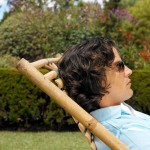 To practice deep breathing exercises, breathe in slowly through your nose for a count of 5, hold for a count of 2, then exhale slowly through your mouth for a count of 8. Now, most people like to have flat abs and a big chest, but when you’re doing deep breathing exercises, forget that and focus on expanding your diaphragm. In the a count of 5, hold for a count of 2, then out for a count of 8.
To practice deep breathing exercises, breathe in slowly through your nose for a count of 5, hold for a count of 2, then exhale slowly through your mouth for a count of 8. Now, most people like to have flat abs and a big chest, but when you’re doing deep breathing exercises, forget that and focus on expanding your diaphragm. In the a count of 5, hold for a count of 2, then out for a count of 8.
For a boost to your lymphatic system (which will also boost your immune system) try deep breathing for 20 minutes, two times a day. The drive to and from work is usually a good time for this since you’re trapped in your car anyway.
Guided Visualization
Guided visualization can provide significant stress reducing benefits; including physical relaxation and helping you get inspiration that may help you better manage your life so you can reduce stress. There are so many studies demonstrating the health benefits of guided visualization that many hospitals are incorporating it as an option to help patients with treatments.
 Guided visualization CDs are available or you can do it yourself. Start by getting into a comfortable position, closing y our eyes, and taking a couple of deep breaths. Once you’ve relaxed a little, begin to picture yourself in the middle of the most relaxing environment you can imagine. It may be floating in the clear, cool waters off a remote tropical island near a waterfall. it might be sitting by a fire in a secluded cabin, deep in the woods, sipping hot chocolate while snow gently falls. Or maybe it’s sitting under a tree next to a cool stream sipping lemonade.
Guided visualization CDs are available or you can do it yourself. Start by getting into a comfortable position, closing y our eyes, and taking a couple of deep breaths. Once you’ve relaxed a little, begin to picture yourself in the middle of the most relaxing environment you can imagine. It may be floating in the clear, cool waters off a remote tropical island near a waterfall. it might be sitting by a fire in a secluded cabin, deep in the woods, sipping hot chocolate while snow gently falls. Or maybe it’s sitting under a tree next to a cool stream sipping lemonade.
As you imagine your scene, try to involve all your senses. What does it look like? How does it feel? Do you hear the sound of the waterfall, or the sound of the fire crackling in the fireplace, or the stream running down the sides of the bank and the birds chirping in the trees? Smell the smoke from the fire or the flowers in the meadow, or the refreshing sea breeze. Make your vision so ral you can even taste the lemonade or the hot chocolate!
Stay there for as long as you like. Enjoy your “surroundings”, and let yourself be far from whatever stresses you. When you’re ready to come back to reality, count back from ten or twenty, and tell yourself that when you get to “one,” you’ll feel peaceful and alert and able to enjoy the rest of the day. when you return from your “vacation”, you’ll feel calm and refreshed without even leaving the room!
Music Therapy
Music therapy has shown many health benefits for people with conditions ranging from stress to cancer. When dealing with stress, the right music can actually lower your blood pressure, relax your body, and calm your mind.
 Most people are aware that when they hear a particular song, they just want to get up and start dancing. Ther’s some music that puts them in a romantic mood, and then there’s other music that, as soon as it comes on the radio, they just want to shut it off because it gets on their last nerve! That music therapy!
Most people are aware that when they hear a particular song, they just want to get up and start dancing. Ther’s some music that puts them in a romantic mood, and then there’s other music that, as soon as it comes on the radio, they just want to shut it off because it gets on their last nerve! That music therapy!
Music has a frequency (rate of vibration), sound has a frequency, emotions have a frequency. Similar frequencies resonate with one another. If you want to encourage a feeling of excitement in your home then you play up-temp, fun, dancing music. If you want to bring about a calm, peaceful state, then play calm, peaceful music.
Two of my favorite CDs for de-stressing are Music to De-Stress and Music to Relax
, both are performed by the Arcangelos Chamber Ensemble.
Essential Oils
Smell is the only one of the five senses directly linked to the limbic lobe of the brain (the emotional control center). From anxiety to depression, fatigue to stress, essential oils have been used for their effects on the emotions for a very long time. By diffusing essential oils or applying them to your body, the therapeutic constituents of essential oils help reestablish balance.
 Known as the “grandmother” of essential oils, lavender is well known as an essential oil that promotes relaxation.l There are even fabric softeners scented with lavender in order to “help you sleep.” Chamomile is another essential oil that is considered calming as is rose, jasmine, sandalwood, and cedarwood. The LeTranquility blend from Butterfly Express is one of my favorite calming blends and we put LeGoodNite in our diffuser every evening before bed.
Known as the “grandmother” of essential oils, lavender is well known as an essential oil that promotes relaxation.l There are even fabric softeners scented with lavender in order to “help you sleep.” Chamomile is another essential oil that is considered calming as is rose, jasmine, sandalwood, and cedarwood. The LeTranquility blend from Butterfly Express is one of my favorite calming blends and we put LeGoodNite in our diffuser every evening before bed.
Foot Zone Therapy
Foot zone therapy dates back 5,000 years and was used in ancient China and India. Egyptian hieroglyphs and paintings also show the use of this method. Benefits vary, but include: release of tension, cleansing the body of toxins, improvement in circulation, harmony and peace in your home and life.
 Foot zone sessions last approximately 45-60 minutes during which time the therapist will work the entire foot which corresponds to the entire body. During the zone, as blockages are felt in the signal for specific body parts or organs, the therapist will work to clear the blockage which assists the body in correcting the imbalance. To learn more about the benefits of a foot zone session and what to expect during and after a session, you can go here. It’s extremely important that your session be conducted by a Certified Foot Zone Therapist since much more happens during a session than meets the eye. To find a Foot Zone Therapist near you, go here.
Foot zone sessions last approximately 45-60 minutes during which time the therapist will work the entire foot which corresponds to the entire body. During the zone, as blockages are felt in the signal for specific body parts or organs, the therapist will work to clear the blockage which assists the body in correcting the imbalance. To learn more about the benefits of a foot zone session and what to expect during and after a session, you can go here. It’s extremely important that your session be conducted by a Certified Foot Zone Therapist since much more happens during a session than meets the eye. To find a Foot Zone Therapist near you, go here.
Jin Shin Jyutsu Finger Hold
Jin Shin Jyutsu is an ancient Japanese method of energy work involving energy points (called Safety Energy Locks) and finger holds. In the early 1900’s Jiro Murai was diagnosed with a terminal illness and told there was no doctor that could help him. He eventually asked his family to carry him to their mountain cabin and leave him there for seven days to meditate and return for him on the eighth day. While there Master Murai fasted and meditated and received instruction in what he called Jin Shin Jyutsu. On the seventh day, he lost consciousness and when his family came to retrieve him, he awoke and discovered he was healed.
Master Murai began teaching the art of Jin Shin Jyutsu to others and while doing so assisted a family member of the emperor of Japan. The family member was healed and in gratitude Master Murai was granted access to the ancient records of Japan. As he studied these records, he discovered that the techniques he had been shown were widely practiced before the birth of Buddha, Moses, and Kijiki.
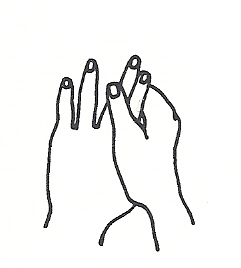 This finger pose aids in releasing the fatigue, tension, and stress that can build up during the course of daily life. It assists in the release of worries, fears, and anger: hold the back of the left thumb, index, and middle fingers with the right thumb. Place the rest of the right fingers on the palm side of the left thumb, index, and middle fingers. Reverse for the right thumb and fingers.
This finger pose aids in releasing the fatigue, tension, and stress that can build up during the course of daily life. It assists in the release of worries, fears, and anger: hold the back of the left thumb, index, and middle fingers with the right thumb. Place the rest of the right fingers on the palm side of the left thumb, index, and middle fingers. Reverse for the right thumb and fingers.
 This finger pose helps with timidity, mental confusion, depression, perfectionism, criticism, and frustration: lightly hold the back of the left thumb with the palm side of the right hand wrapping the rest of the right fingers around the thumb to the palm side and tucking the right thumb over the right fingers. After balancing the thumb, move to the index finger, and then the pinkie finger holding each in a similar manner until you feel the balance. Reverse for the right thumb, index finger, and pinkie finger. (“Balance” feels differently but may be a sigh or deep breath, a release of tension, or a light energy vibration feeling. If you are unable to feel the balance, simply hold for 1-2 minutes and move to the next finger.)
This finger pose helps with timidity, mental confusion, depression, perfectionism, criticism, and frustration: lightly hold the back of the left thumb with the palm side of the right hand wrapping the rest of the right fingers around the thumb to the palm side and tucking the right thumb over the right fingers. After balancing the thumb, move to the index finger, and then the pinkie finger holding each in a similar manner until you feel the balance. Reverse for the right thumb, index finger, and pinkie finger. (“Balance” feels differently but may be a sigh or deep breath, a release of tension, or a light energy vibration feeling. If you are unable to feel the balance, simply hold for 1-2 minutes and move to the next finger.)
To learn more about Jin Shin Jyutsu or to find a practitioner, go here.
So there you go! Six things you can do (most of them without the help of anyone else), anytime, anywhere to relieve stress naturally.




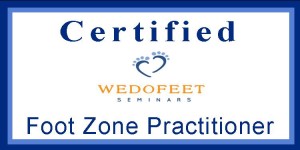
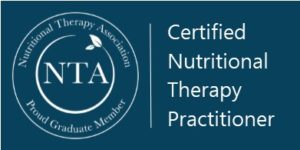
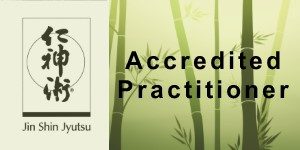

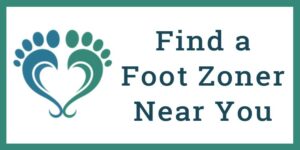

These are great tips! I am just getting into essential oils I can’t wait to try out your suggestions. I also wanted to tell you I nominated you for the Versatile Blogger Award. Check it out! http://www.beverlybees.com/versatile-blogger-award
Anita, that is SO nice of you! Thank you! 🙂